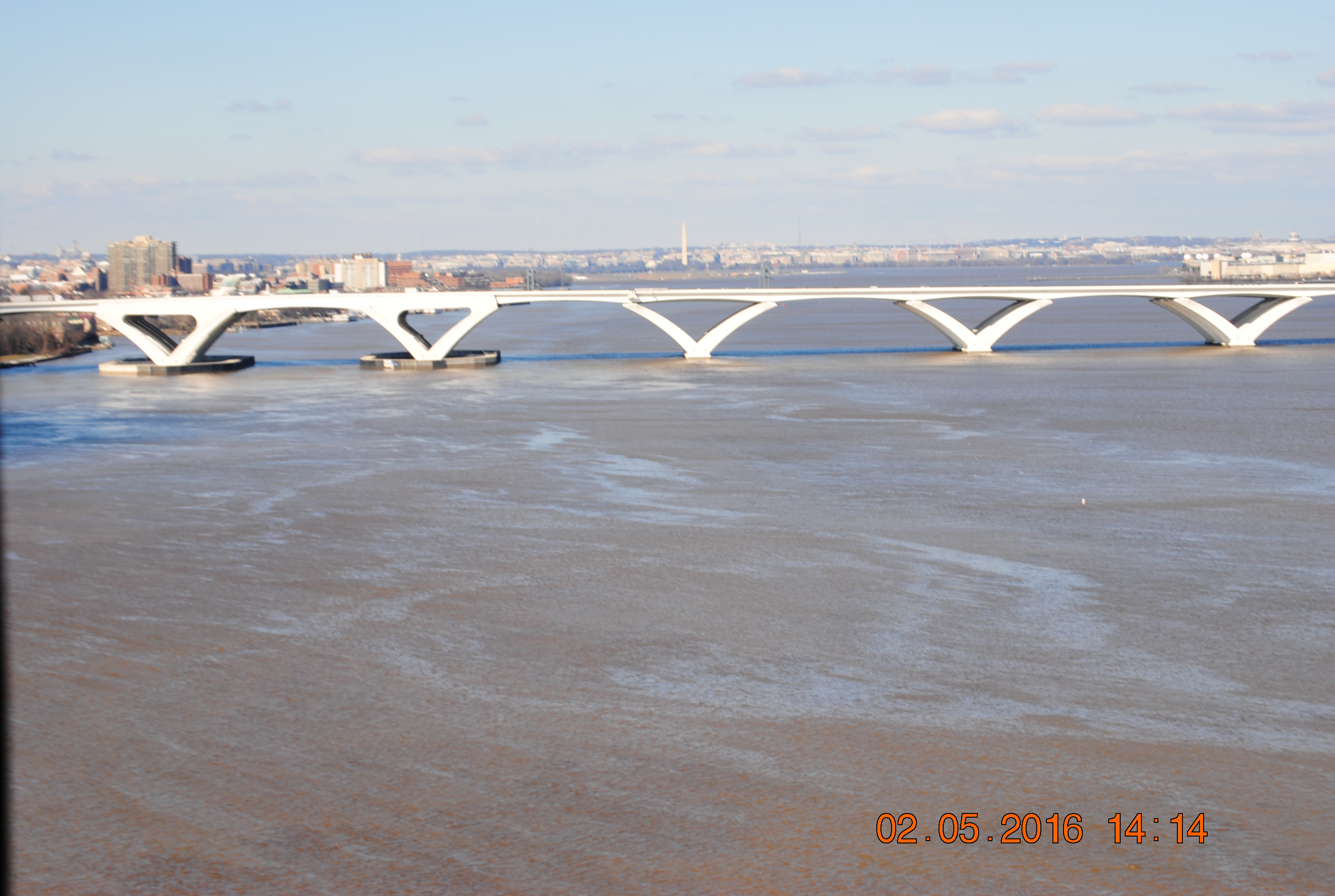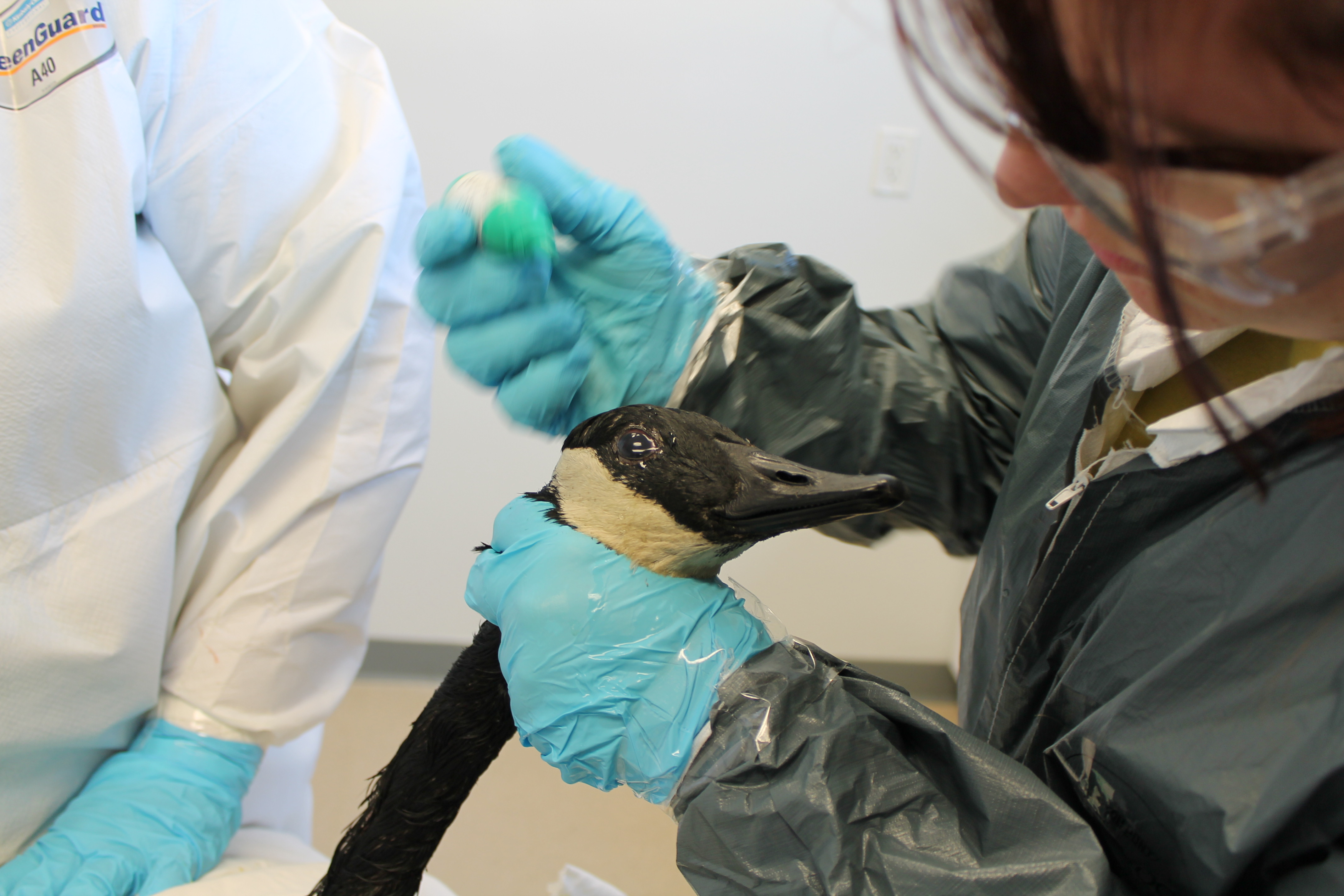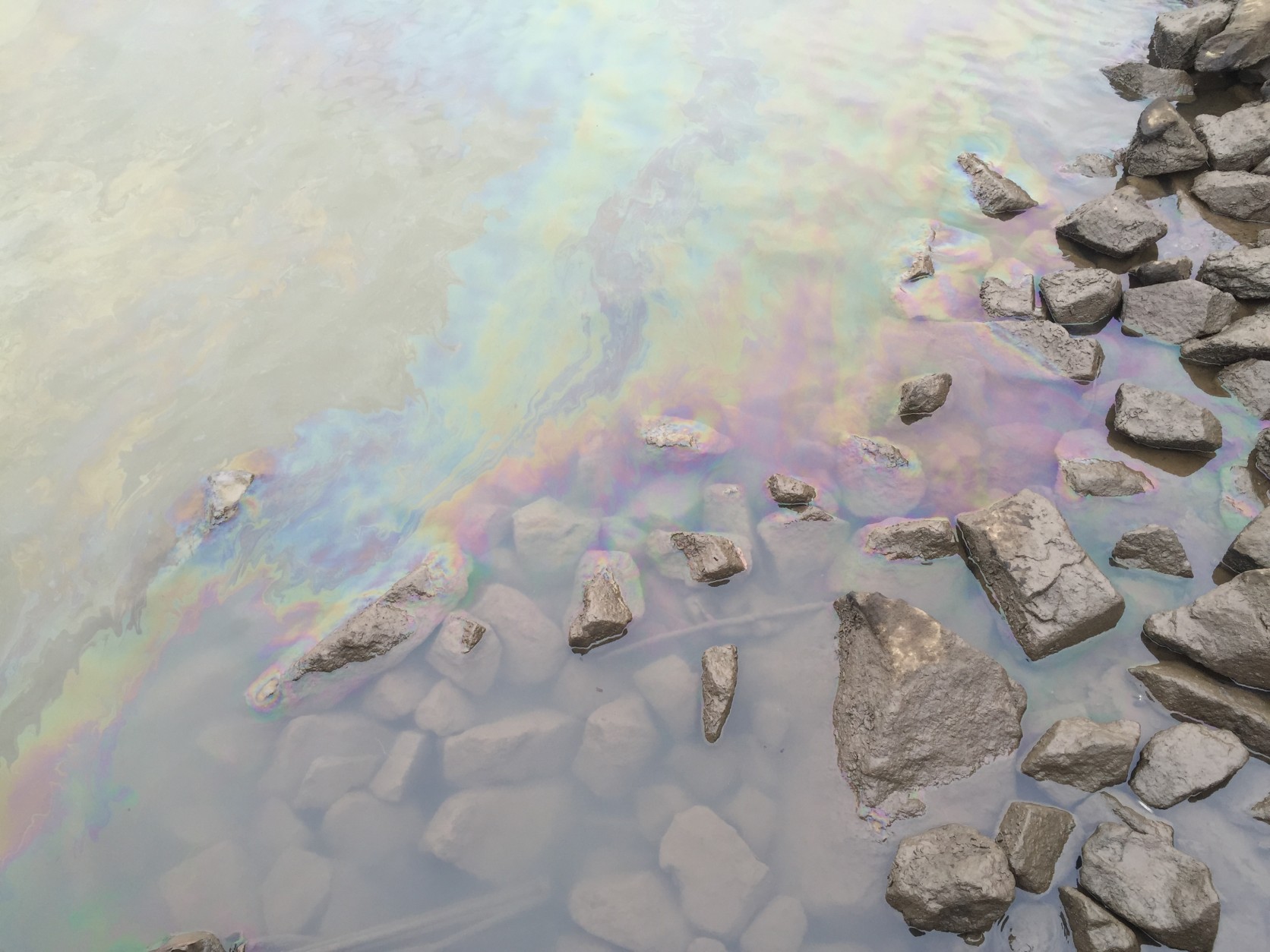
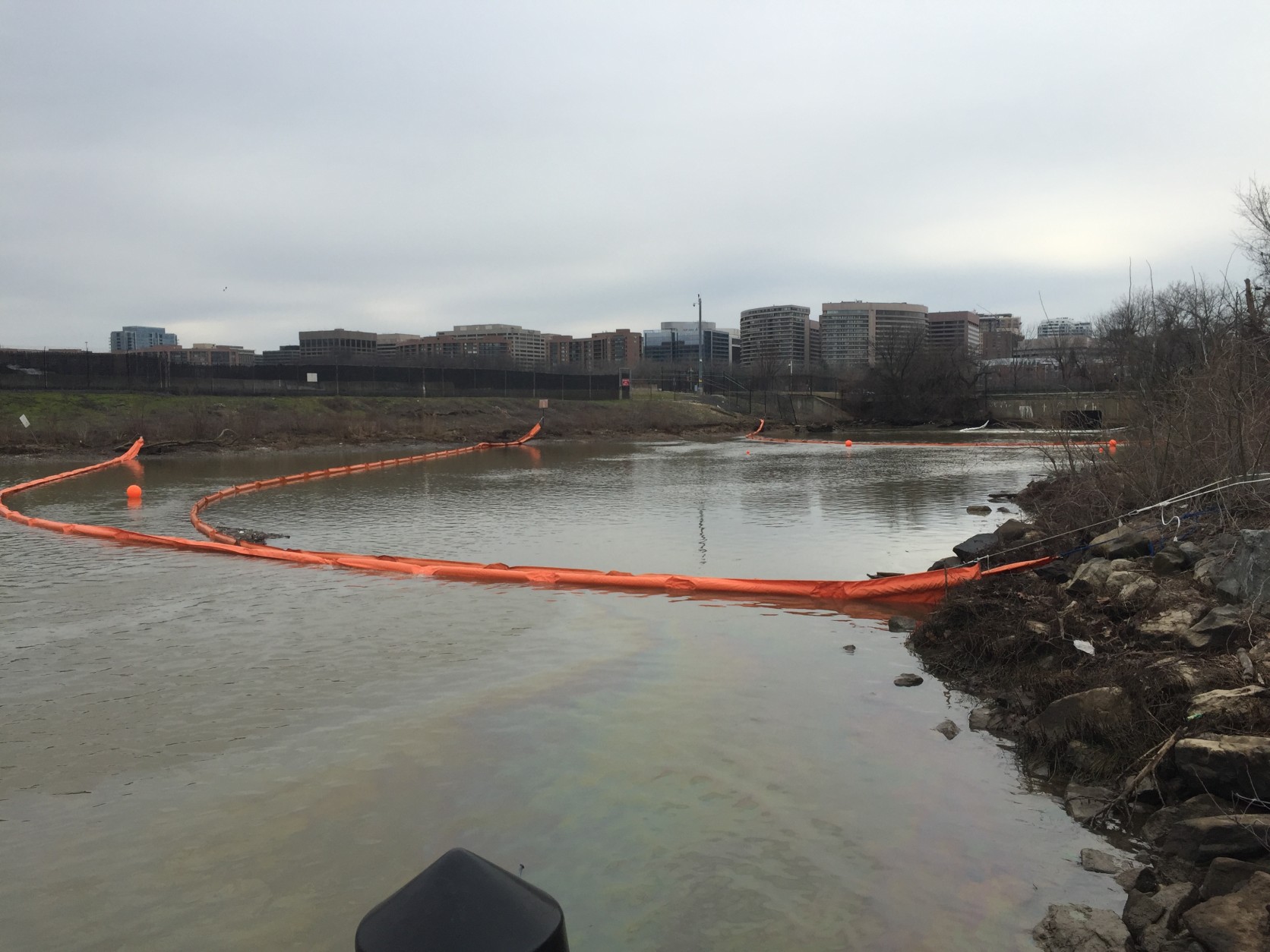

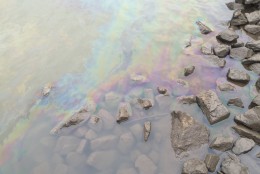
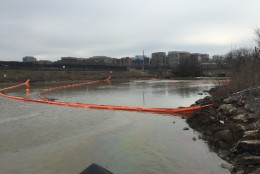
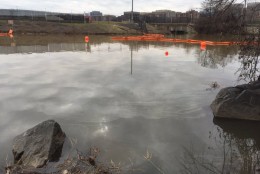
ALEXANDRIA, Va. — Dominion Power is taking full responsibility for the oil sheen on the Potomac River, and will likely have to foot the bill for its cleanup.
Dominion Power made the announcement Friday evening — hours after the Coast Guard released test results on samples of the sheen taken from several spots, including Roaches Run Waterfowl Sanctuary and the Dominion Power substation in Crystal City.
“All four samples that we collected are coming from the same source,” said Incident Commander Michael Keane with the U.S. Coast Guard.
The Dominion Power station was the scene of a mineral oil spill, caused by a transformer failure on Jan. 24. In the incident, 13,500 gallons of the product spilled.
Dominion said more than 95 percent of it has been recovered.
The Coast Guard said the samples were only taken from spots at Roaches Run and near the power substation. Storm drains from the substation do connect to outfalls in Roaches Run, according to Keane.
The Coast Guard said its job now is to make sure the source is secured. No additional areas of the rainbow-colored film has been seen in more than 24 hours, according to Keane. The oil is continuing to evaporate, he adds.
Dominion Power spokesman Chuck Penn released the following statement late Friday:
“Dominion has reviewed the oil testing data conducted by the U.S. Coast Guard. We concur with their findings that the substance was transformer mineral oil and we accept responsibility. As we have stated from the very beginning when we were made aware of the oil sheen, we would have no hesitancy in accepting responsibility should testing link our January 24 transformer spill to the sheen. We will move with all due haste to work with the agencies to ensure the remaining cleanup work is done.”
Keane adds the National Pollution Funds Center will be the one to officially announce who is at fault in the spill.
The oil in the river affected birds in the area. Of all, 52 birds, mostly Canadian geese were found covered in the oil. So far, 21 birds have died from their injuries.
When the sheen was spotted in the beginning of February, it stretched as far south as the Woodrow Wilson Bridge. In explaining why such a large area was covered, Keane said one thing to keep in mind is that one teaspoon of fuel is capable of causing a sheen as large as a football field.
The Coast Guard discovered on Monday that the substance found in the Potomac was a fuel oil. An example of fuel oil is home heating oil, but Keane said mineral oil also falls into the category.
Dominion will likely be on the hook for the cost of the response and cleanup, including the rescue and rehabilitation of impacted birds.
The exact cost of the cleanup and response hasn’t been calculated. The Coast Guard is dipping into its oil spill trust liability fund worth $250,000, but has yet to meet that mark.
Below is a map of where the test samples were taken:
Aerial view of oil sheen source spots


